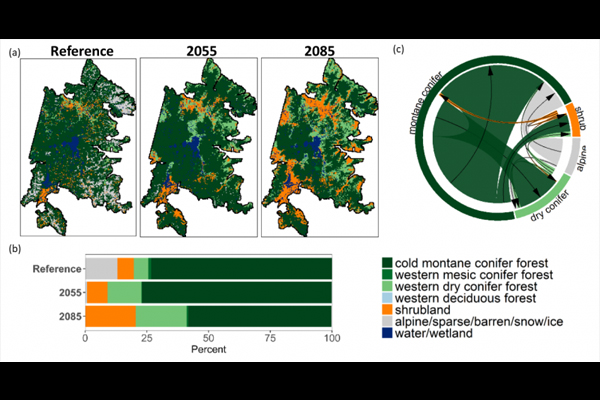Climate Change Likely To Reshape Vegetation in North America's Largest Protected Areas

Potential changes in vegetation distribution in Yellowstone and Grand Teton NP, adjacent Forest Service wilderness areas: (a) the baseline period and years 2055 and 2085 of vegetation, (b) vegetation composition for each time period, (c) projected shifts
We evaluated how climate change may affect vegetation in 22 of the largest and most iconic protected areas across North America.
- The majority of protected areas examined may experience substantial vegetation changes by the end of the 21st century.
- We anticipate trends towards vegetation associated with warmer or drier climates with cascading ecological responses for the flora and fauna.
- We present fine-scale maps of future vegetation to help envision the future challenges for native vegetation and the species dependent upon such resources.
- These maps may aid in building conservation strategies and climate adaptation measures to conserve biodiversity across North American protected areas.
Access this research spotlight here.
Featured publications:
Climate change likely to reshape vegetation in North America's largest protected areas